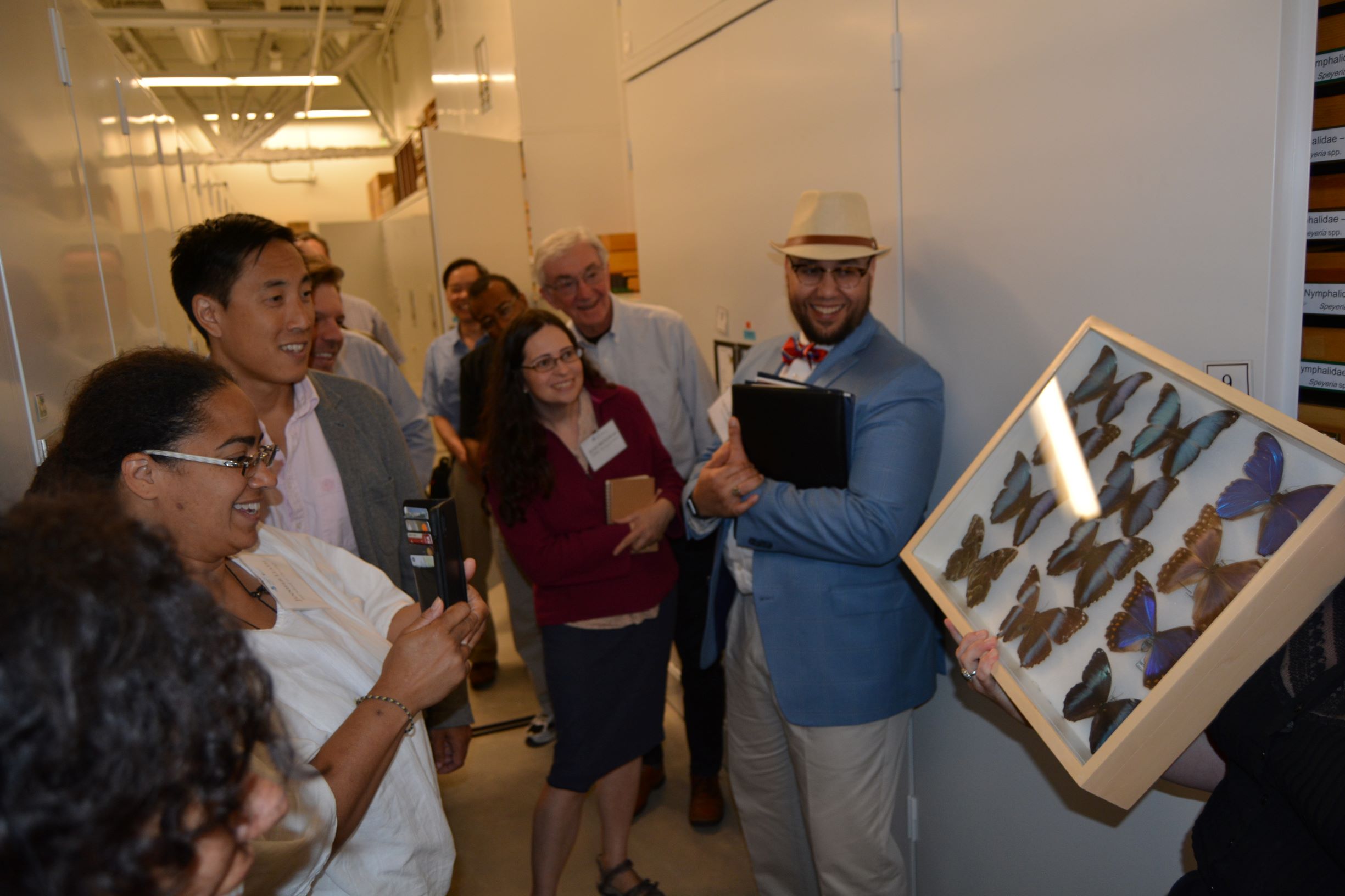This is a reposted article from AAAS News; read the original here.
This summer, faculty leaders from seventeen North American seminaries, along with scientific and theological experts, gathered near Salt Lake City, Utah, for the Science in the Curriculum Faculty Enrichment Retreat. The retreat, organized by the AAAS Dialogue on Science, Ethics and Religion (DoSER) program, provided an opportunity for seminary professors to engage across denominations, discuss and reflect on a variety of science topics, develop pedagogical skills and strategies for science integration into their curricula, acquire science resources, and build networks and relationships with the theological and scientific communities. The retreat was hosted as part of the Science for Seminaries project, which is organized by AAAS DoSER in collaboration with the Association of Theological Schools (ATS). Science for Seminaries equips seminaries and their faculty with the skills and relationships needed to provide improved science exposure to their students. These future religious readers are then better prepared to welcome good, relevant science into the conversations and ministries of their future congregations.
The four-day retreat brought together faculty who are interested in integrating science into their curricula. Participants included representatives from institutions that are active in the AAAS DoSER Science for Seminaries project as well as from other institutions interested in bringing forefront science into their curricula and surrounding communities. Attendees were immersed in conversations at the nexus of science and religion, affording them the chance to delve deeper and reflect on ways to integrate science into theology curricula. A range of topics were explored, including astronomy, computer science, psychology, genetics, ecology and environmental stewardship, and the history and philosophy of science. The retreat included a mix of presentations, small group discussions, and formal and informal conversations between new faculty and current project advisors. Participants were encouraged to ask questions about the science and share insights on how it connects with their theology, community, and classrooms. Discussions ranged from the impact of new gene editing tools on humans, animals, and plants, to the ways science can help improve society. The sessions provided opportunities to explore big questions about the relationship between various scientific and religious topics. As one attendee stated, “What I appreciated the most was the opportunity to think creatively about science and theology.”
In addition to speaking with faculty and advisors already active in the Science for Seminaries project, retreat participants were able to connect with scientists who currently engage with religious communities at the interface of science and society. Two scientists from a local university, the University of Utah, presented on their scientific research and ways in which they connect with outside communities to ensure their research benefits the public. The first speaker, Dr. Nalini Nadkarni, discussed her extensive ecological research and her public engagement with diverse religious traditions and incarcerated people. As one participant shared, “Nalini Nadkarni’s presentation was the most beneficial… The idea of connecting to nature to combat the fragmentation within society and truncation required by technology was useful.” Dr. Dana Carroll presented on the new cutting-edge science of gene editing and the impact this science is having on agriculture and animal husbandry. He also explored the ethical implications of gene editing on humans.

Participants in the 2019 Science in the Curriculum Faculty Enrichment Retreat receive a behind-the-scenes tour of the National History Museum of Utah | AAAS/Rob O’Malley
On the third day, retreat participants toured the National History Museum of Utah and learned about the geographical, anthropological, and paleontological history of the state. It included a behind-the-scenes tour of the museum’s extensive insect collection, as well as viewing and discussing artifacts that were collected and donated from local Native American tribes. Seminarians were able to learn more about how researchers collect and catalogue specimens, from dinosaur bones to insects; discuss some of the logistical and ethical challenges in scientific research; and explore how the work of science is part of the human experience. Visits such as these illustrate how seminary faculty might fruitfully collaborate with science institutions in their area.
One focus of the retreat was to enable fruitful connections between seminary faculty and scientists, building dialogue and relationships that will hopefully grow and last. The experience also brought people together from a broad spectrum of ATS “ecclesial families” to have robust discussions about common concerns and unique issues that each denomination encounters when engaging in conversations at the intersection of religion and science. Of the three ATS “ecclesial families,” participants from eight Evangelical/Conservative Protestant, six Mainline Protestant, and three Roman Catholic institutions attended the retreat.
This year’s retreat was also comprised of the most diverse group of seminary faculty members to date. Seventeen seminaries participated from eleven different Christian denominations, including Southern Baptist, Non-denominational, and United Methodist Church. The retreat included representatives from four historically Black seminaries: Hood Theological Seminary, Howard University School of Divinity, Payne Theological Seminary, and Shaw University School of Divinity. This richness of diversity contributed to the robust conversations and questions put forth in the various small group and plenary sessions.
The Faculty Enrichment Retreat was the second of four that will occur during Phase II of the Science for Seminaries Project. The project builds on the AAAS long-standing commitment to relate scientific knowledge and technological development to the purposes and concerns of society at large and DoSER’s mission to facilitate communication between scientific and religious communities. According to a 2013 poll conducted by AAAS and Rice University, many people consult their religious leaders for guidance on issues relating to science and technology, even though these clergy members may have little exposure to science in their educational experience. The annual Faculty Enrichment Retreat provides the opportunity for representatives from interested seminaries to connect with and ask questions of current and former project participant schools, interact with expert scientists, and get a taste of what science resources are provided for seminaries in the program.
More information about the project can be found at www.scienceforseminaries.org.




